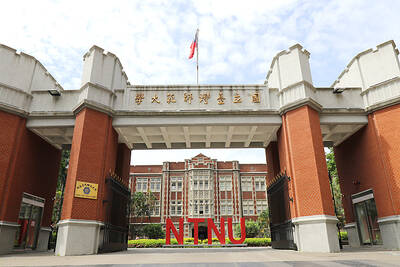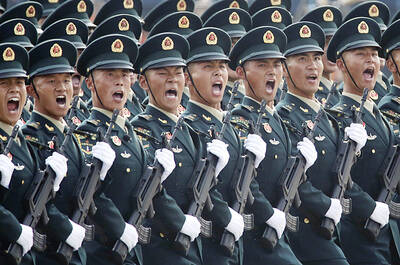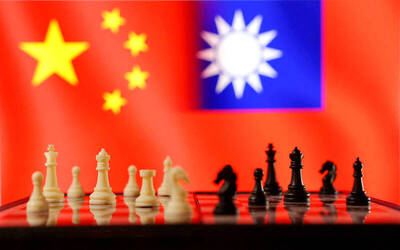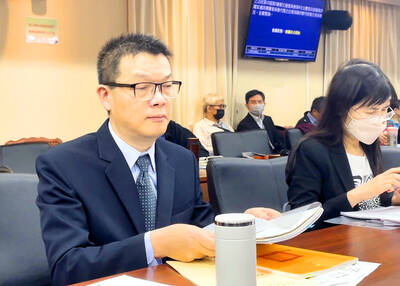Academics attending a forum in Taipei yesterday attributed the Chinese Nationalist Party’s (KMT) electoral defeats in 2014 and last year to its attempt to become Taiwan-centric, while some blamed them on KMT Chairwoman Hung Hsiu-chu’s (洪秀柱) abandonment of the so-called “1992 consensus.”
At a forum held by the Taiwan Local Cultural Youth Association on the factors behind the KMT’s dwindling popularity Taiwan Competitiveness Forum director-general Pang Chien-kuo (龐建國) said the KMT’s root problems began when former president and party chairman Lee Teng-hui (李登輝) sought to turn the KMT into the “Taiwanese nationalist party” and tainted the party with “black gold” politics.
The association was founded by a group of young pan-blue supporters last year.
“That the KMT still suffered electoral defeats after having followed the ‘Taiwanese nationalist party’ direction suggests it is a dead end,” Pang said, adding the KMT’s future would be dire if it continues to cling to the naive idea that being a Taiwan-centric party would help it gain the support of swing voters.
Chinese Culture University college of social science dean Chao Chien-min (趙建民) criticized Hung for giving away the KMT’s “golden key” in dealing with cross-strait ties to her opponent, President Tsai Ing-wen (蔡英文), who has been leaning toward the middle ground.
Chao said maintaining the cross-strait “status quo,” as well as adherence to the Republic of China (ROC) Constitution, the “1992 consensus,” and the “one China, with different interpretations” framework used to be the pillars of the KMT’s cross-strait policy.
“Most of us were already not satisfied with the ‘1992 consensus,’ but at least it is the only golden key that could be used to handle cross-strait ties at the moment … but why would you [Hung] throw away the only key?” Chao said.
Chao was referring to some KMT members’ belief that Hung intends to replace the “one China, with different interpretations” aspect of the “1992 consensus” with the formula of “one China, same interpretation.”
The “1992 consensus” refers to a tacit understanding between the KMT and Beijing that both sides of the Taiwan Strait acknowledge there is “one China,” with each side having its own interpretation of what “China” means. Former Mainland Affairs Council chairman Su Chi (蘇起) said in 2006 that he had made up the term in 2000.
KMT Vice Chairman Hau Lung-bin (郝龍斌), who also attended the forum, said the party being out of sync with mainstream public opinion was the main reason for its two major electoral losses.
“The time when one person was allowed to call all the shots is over. We must tolerate diversity, listen to public opinion and give people what they need. Only by doing so can the KMT progress toward its long-term goal of regaining power,” Hau said.

CHANGING LANDSCAPE: Many of the part-time programs for educators were no longer needed, as many teachers obtain a graduate degree before joining the workforce, experts said Taiwanese universities this year canceled 86 programs, Ministry of Education data showed, with educators attributing the closures to the nation’s low birthrate as well as shifting trends. Fifty-three of the shuttered programs were part-time postgraduate degree programs, about 62 percent of the total, the most in the past five years, the data showed. National Taiwan Normal University (NTNU) discontinued the most part-time master’s programs, at 16: chemistry, life science, earth science, physics, fine arts, music, special education, health promotion and health education, educational psychology and counseling, education, design, Chinese as a second language, library and information sciences, mechatronics engineering, history, physical education

The Chinese military has boosted its capability to fight at a high tempo using the element of surprise and new technology, the Ministry of National Defense said in the Quadrennial Defense Review (QDR) published on Monday last week. The ministry highlighted Chinese People’s Liberation Army (PLA) developments showing significant changes in Beijing’s strategy for war on Taiwan. The PLA has made significant headway in building capabilities for all-weather, multi-domain intelligence, surveillance, operational control and a joint air-sea blockade against Taiwan’s lines of communication, it said. The PLA has also improved its capabilities in direct amphibious assault operations aimed at seizing strategically important beaches,

‘MALIGN PURPOSE’: Governments around the world conduct espionage operations, but China’s is different, as its ultimate goal is annexation, a think tank head said Taiwan is facing a growing existential threat from its own people spying for China, experts said, as the government seeks to toughen measures to stop Beijing’s infiltration efforts and deter Taiwanese turncoats. While Beijing and Taipei have been spying on each other for years, experts said that espionage posed a bigger threat to Taiwan due to the risk of a Chinese attack. Taiwan’s intelligence agency said China used “diverse channels and tactics” to infiltrate the nation’s military, government agencies and pro-China organizations. The main targets were retired and active members of the military, persuaded by money, blackmail or pro-China ideology to steal

DEADLOCK: As the commission is unable to forum a quorum to review license renewal applications, the channel operators are not at fault and can air past their license date The National Communications Commission (NCC) yesterday said that the Public Television Service (PTS) and 36 other television and radio broadcasters could continue airing, despite the commission’s inability to meet a quorum to review their license renewal applications. The licenses of PTS and the other channels are set to expire between this month and June. The National Communications Commission Organization Act (國家通訊傳播委員會組織法) stipulates that the commission must meet the mandated quorum of four to hold a valid meeting. The seven-member commission currently has only three commissioners. “We have informed the channel operators of the progress we have made in reviewing their license renewal applications, and